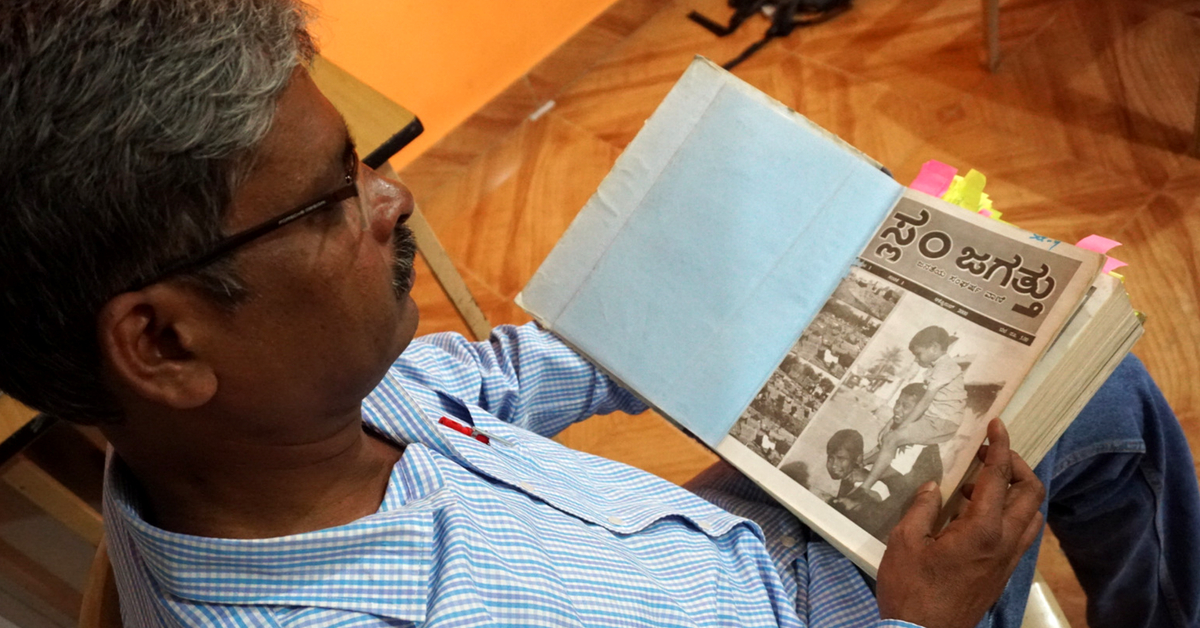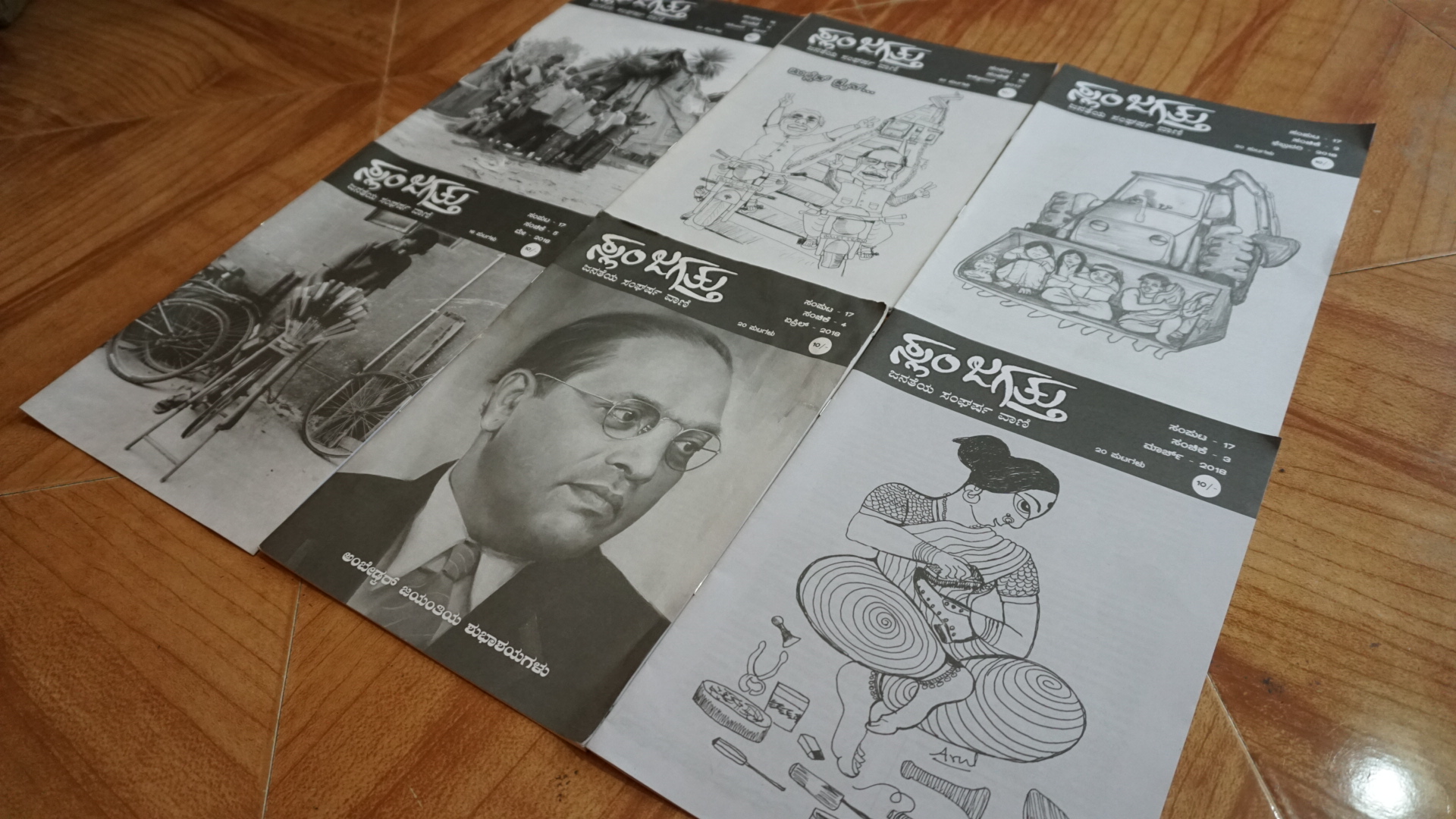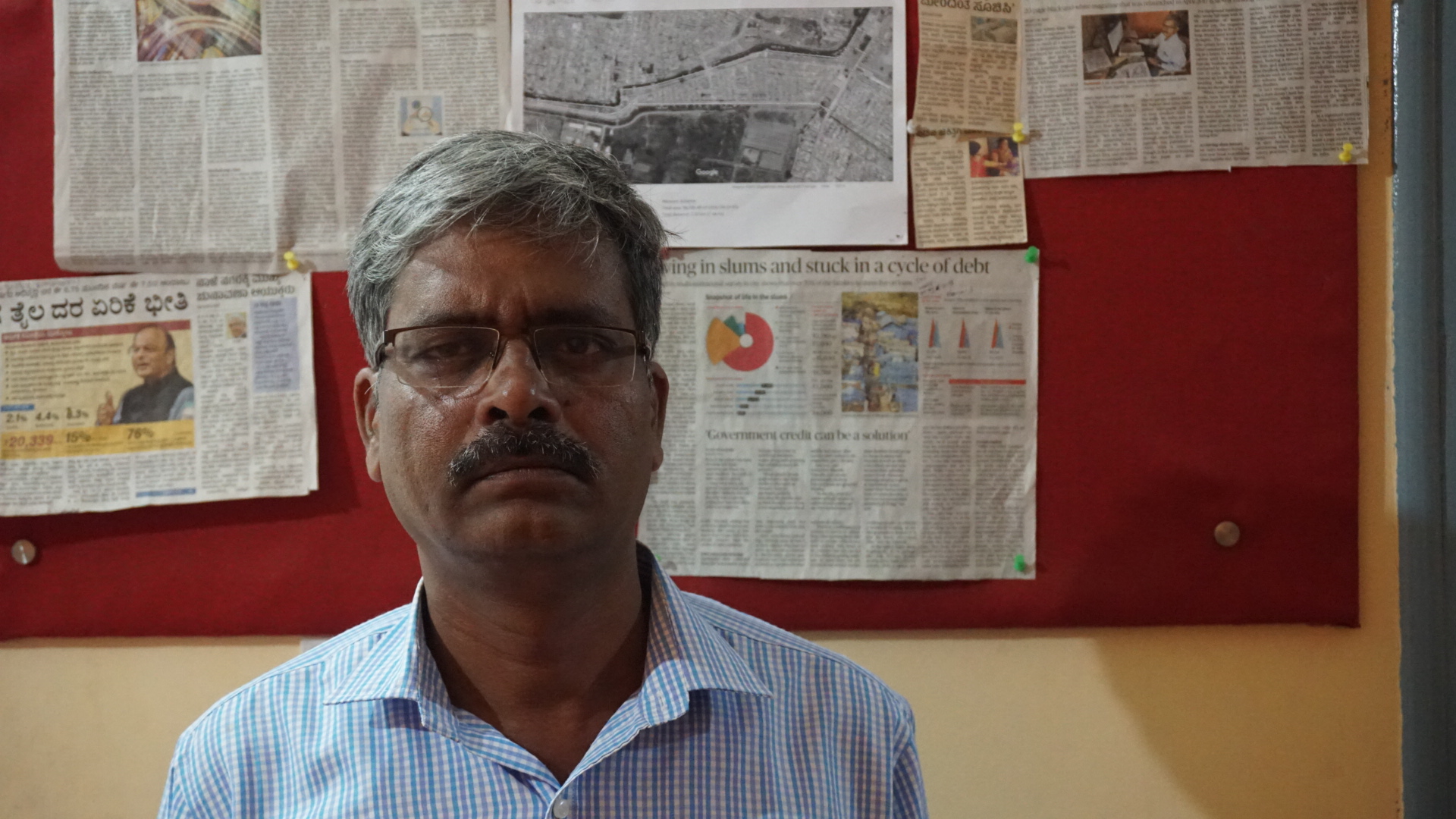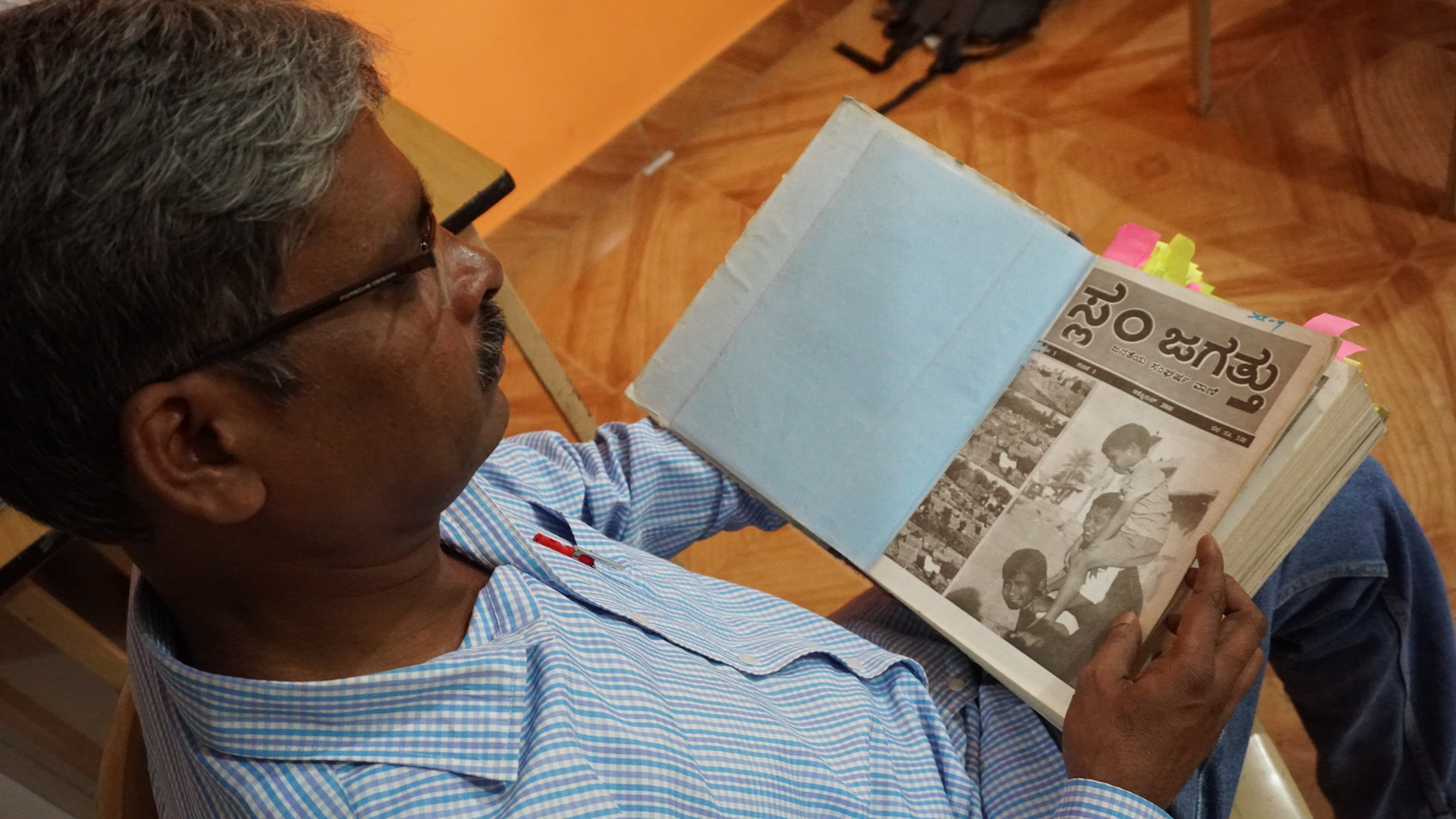Exclusive: Inside India’s Only Magazine Of, For and By Slum Dwellers
Priced at ₹10, the affordable, monthly, monochromatic magazine truly embodies the phrase, ‘For the people, by the people’ and reaches out to people living in slums across nine city corporation limits in Karnataka.

According to the 2011 census, close to 1.38 crore households—which is about 6.4 crore people—are located in overcrowded slums in cities across India, accounting for a total of 17.4 percent of all urban households and roughly making up one-third of the country’s population.
It is estimated that this percentage will increase as the country’s population continues to expand. In fact, Asia’s largest and the world’s third largest slum is located in Dharavi, a locality in Mumbai, and the dwellers continue to remain unverified by census authorities.
Not far behind are other metropolitan cities like Kolkata, Chennai and New Delhi, that also have a large population of slum dwellers right beside high-rise corporate offices and residential complexes. Even Bengaluru has its own band of slum dwellers located across different pockets in the city.
People from across the world are astounded when they see these individuals and families, who live in extremely constricted and dilapidated living spaces with limited ventilation, lighting, sanitation, and water facilities.
Little has been done to elevate the living conditions of people living in slums across India. Come to think of it, India’s slum population is one of the largest in the world, and yet the section has seen extremely inadequate representation in society, especially in the regular media. Whether it is their day-to-day problems or thoughts and aspirations, we very rarely come across any human-centric coverage of slum dwellers and their lives.
But what most of you may not know is that one magazine in Karnataka has been chronicling the lives of slum dwellers since the year 2000, and what makes it stand out is the fact that every contributor to the publication lives in a slum.
Slum Jagatthu, which translates to slum world in Kannada, is the brainchild of Bengaluru resident Arul Selva, who has dedicated a little over two decades to write about the people who everyone prefers to ignore.

Priced at ₹10, the affordable, monthly, monochromatic magazine truly embodies the phrase, ‘For the people, by the people’ and reaches out to people living in slums across nine city corporation limits in Karnataka, including Bengaluru, Tumkur, Mysore, Mandya and Hosapete.
When Arul was growing up, he was regularly rattled by questions revolving around the lives of slum dwellers and troubled by how governmental bodies or media organisations rarely lent their attention to their woes.
Population growth far beyond the capacity of the existing housing in a city is indeed one key reason which leads to the proliferation of slums, but there is also a pertinent issue that each passing government in the country has failed to acknowledge—urbanisation and slum continuum.
“While the recent explosion of slums can be directly related to the burgeoning migration to cities and towns, how did slums come into being in the first place—that too in a city like Bengaluru? Multinational corporations are taking over land that once housed the local population, and the local government mostly supports such projects with no consideration for the displaced people. This is the sad reality of how slums came into being. Because of their inability to produce documents for the land handed down to them years ago, and the lack of godfathers, the slum dwellers are the scapegoats of the society, and constant face the threat of evictions and displacement,” says Arul to The Better India.
A class 4 dropout who took to doing menial jobs to fill his stomach, it was while he was employed at a local hotel that Arul came across Slum Suddi or slum news, a Kannada newspaper for slum dwellers that was to change the course of his life.
Seeing his interest in working for the publication, the newspaper editor gave him a chance. Many rejections followed, but finally, his story about the nomadic tribes in Bengaluru finally made it to the newspaper—the editor was baffled with the skilful manner in which Arul had written the story.
For a person who does not have many educational qualifications to boast about, Arul says that he always had a penchant for reading (he takes after his father in this regard) and spent all his post-work hours reading Tamil books which shaped his cognitive and journalistic abilities.

The newspaper eventually closed down due to differences between the editor and management, but the fire in Arul had only just been ignited. “I was 27 years old when I decided to start a publication for the slums. There wasn’t any publication other than Slum Suddi across the country that focused on this stratum and with its demise, there wasn’t any hope of someone else taking the endeavour forward,” he remembers.
Teaming up with reporters who had worked with him at Slum Suddi and shared a similar drive to carry forward the work they had been doing, the team published the first ever edition of Slum Jagatthu in October 2000 at a measly price of ₹5.
“My idea was to involve slum dwellers in the entire process. So we began reaching out to them and after much encouragement, started employing reporters who were very well aware of the issues being faced by the people in slums. Our only criteria was that they would have to know how to read or write elementary Kannada; the rest of the skills could be polished through training. Following the selection process, each recruit was given a 4-day training that encompasses ABCs of journalistic writing, frame capturing and even the basics of photography,” he adds.
You may also like: Can India’s Slums Turn Into Silicon Valley? This Brother-Sister Duo Thinks So!
As the years passed by, the magazine’s reach continued to grow, and from 2000 to 2014, it garnered nearly 2000 subscribers. However, the money from subscribers and donations from well-wishers were not enough to sustain the publication, and financial constraints led Arul to suspend its operations in 2014.
However, the publication managed to bounce back in 2017!
“What has changed in a span of three years is the narrative of our stories and the economic perspective has now taken a cultural standpoint as well. From 80, our subscription has now risen to 500 since its re-launch last year, and this includes copies going to Bengaluru University and JNU, Delhi as well,” Arul proudly adds.
At present, Slum Jagatthu has a staff of six members, and each of them hail from slums across the state. “Besides Rajesh, Hariprasad, and Vaishali, who are writers, we have Arul Das, who helps with cover design of the issues, Joseph who designs the layout of the pages and Balamma, who has been associated with the magazine since its incubation days and currently helps coordinate the entire editorial process,” says Arul.
Since there is no guarantee of a steady income, all of them, including Arul, have separate jobs and set aside five days every month for the magazine.

Many writers from the slum who have worked with Slum Jagatthu at some point or the other, have moved over to other publications and some even work with major news channels in Karnataka. “It is heartening to see how people from slums, who are overlooked by everyone, are finding themselves making a mark in mainstream media agencies,” he proudly adds.
While people have come and gone, if there has been one constant captaining the mast of Slum Jagatthu, it is Arul. He attributes his commitment to the cause that has been keeping the ship afloat amidst ups and downs.
Slum Jagatthu, today, has reached a point where it has become a reference text for researchers and development organisations from different parts of the world as it is considered to be a credible and exhaustive source for information about the lives and struggles of slum dwellers in Karnataka.
You may also like: This Low-Cost Solar Invention Can Literally Light up Dreams in Indian Slums!
Only last week, a friend of Arul’s sent pictures of slum development stakeholders to him, where they were referring to the latest issue of Slum Jagatthu with the purpose of using the data present in it. Also, many people have approached him for guidance about starting similar magazines in their area.
“Changes are happening and our work is being recognised. But our long-term aim and goal is the betterment and recognition of people beyond just being slum dwellers. Their voices too deserve to be heard, and we are just helping them with this,” says Arul.
You can look up issues of Slum Jagatthu online here. For other inquiries, you can write to Slum Jagatthu at [email protected].
(Edited by Gayatri Mishra)
Like this story? Or have something to share?
Write to us: [email protected]
Connect with us on Facebook and Twitter.
NEW: Click here to get positive news on WhatsApp!
If you found our stories insightful, informative, or even just enjoyable, we invite you to consider making a voluntary payment to support the work we do at The Better India. Your contribution helps us continue producing quality content that educates, inspires, and drives positive change.
Choose one of the payment options below for your contribution-
By paying for the stories you value, you directly contribute to sustaining our efforts focused on making a difference in the world. Together, let’s ensure that impactful stories continue to be told and shared, enriching lives and communities alike.
Thank you for your support. Here are some frequently asked questions you might find helpful to know why you are contributing?


This story made me
-
97
-
121
-
89
-
167













